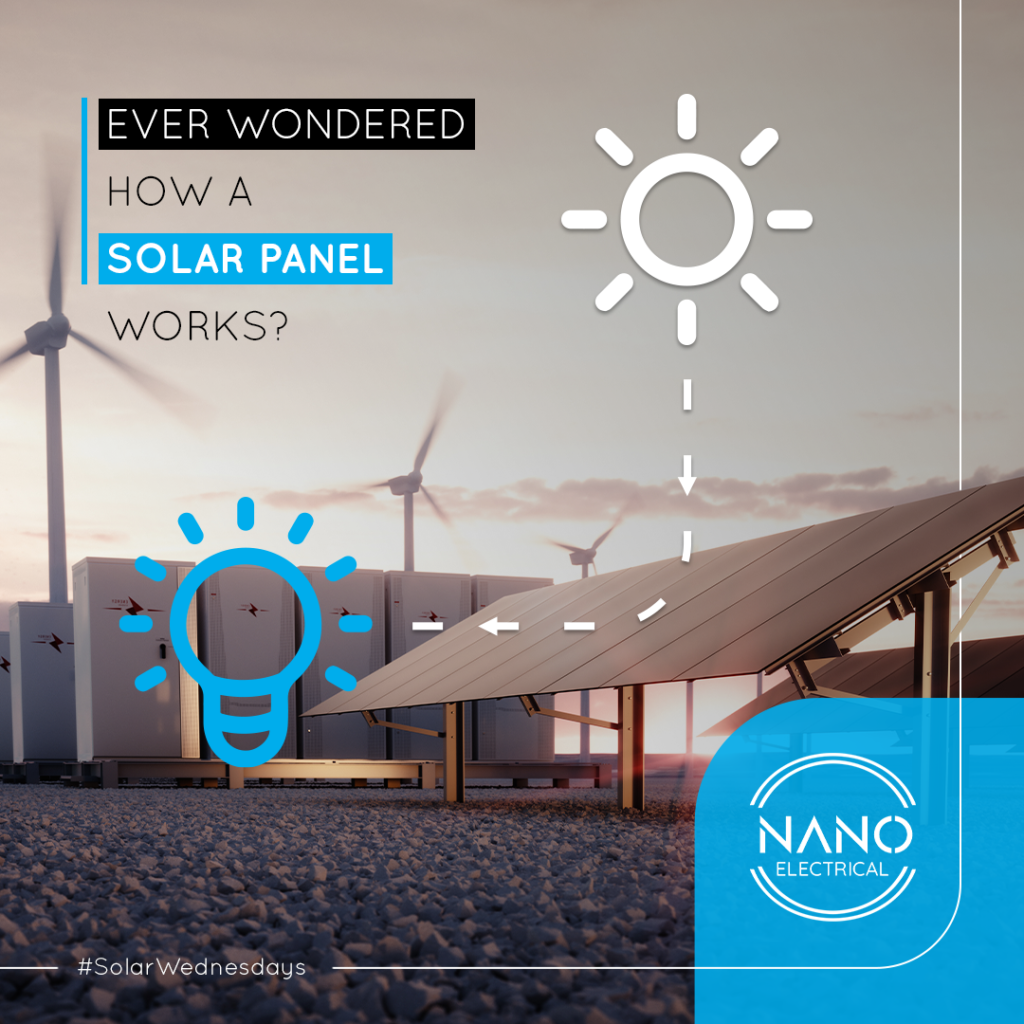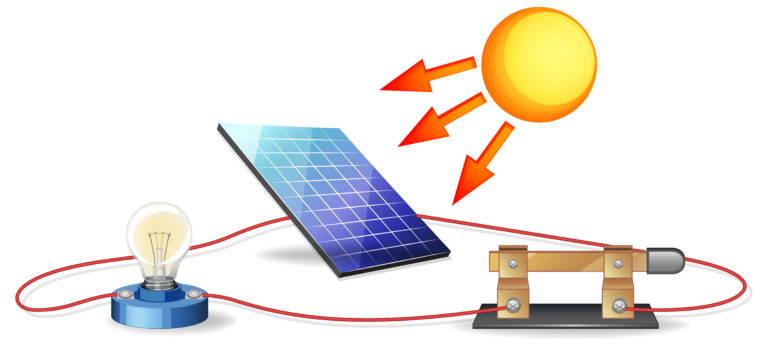
Photovoltaics is the direct conversion of light into electricity at the atomic level. Some materials exhibit a property known as the photoelectric effect that causes them to absorb photons of light and release electrons. When these free electrons are captured, an electric current results that can be used as electricity.
The photoelectric effect was discovered by Alexandre Edmond Becquerel in 1839 but only fully understood by Albert Einstein in 1905.

Solar power works by capturing the sun’s energy and converting it into useful electrical power.
When the sun shines on a solar panel (also called a photovoltaic panel) an electrical current is produced.
This type of electricity that is produced by the PV cells are not always useful to us as it is direct current and most appliances run on alternating current therefore, the PV current needs to be converted into household current.
This conversion is done by the inverter, a device that can produce alternating current from a direct current sources such as solar panels or batteries.
With years of experience in the field, we are able to assist in providing solutions to clients who wish to supplement their energy requirements with solar or be completely self-sustainable with off-grid solutions